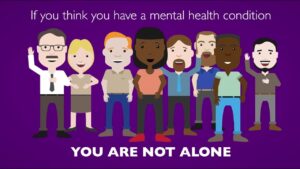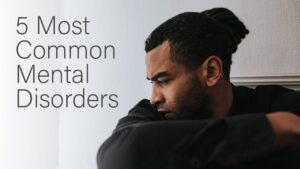Group therapy is a form of psychotherapy that consists of multiple members sharing a common problem or concern. Typically, this type of therapy meets for one to two hours once a week. In addition to the regular sessions, some people choose to attend individual therapy in addition to group therapy. Others may go only to group therapy if they have already received mental health treatment. Regardless of your preference, there is likely a group that is right for you.
Interpersonal process groups
Process groups have several distinct benefits for mental health therapy. These sessions are highly interactive and allow members to examine their unconscious processes. The therapist has a variety of strategic tools to use during the sessions, including the facilitation of process groups. They also allow members to develop new skills that improve their relationship with others. Despite the advantages of these sessions, some individuals find them uncomfortable. If you’re looking for more information on the benefits of process groups, please read on.
The main benefit of process groups is that they focus on the present moment, which is crucial to growth. Through these sessions, you can explore new ways to express your emotions and communicate with others. You’ll also learn how to make others feel understood and heard. Often, the sessions help you improve your self-esteem, especially if you’ve never had the opportunity to do so in the past. If you’re not a good communicator, this type of therapy may not be for you.
The main goal of interpersonal process groups is to help people improve their interactions with others. It’s a psychodynamic approach to helping people build change. Because the group is a microcosm of each individual’s daily interactions, the sessions help participants create a community and culture that is unique to them. Moreover, this type of therapy promotes empathy and acceptance, allowing them to make changes in their lives. The therapist’s role is to facilitate and observe the process of the group.
Another benefit of process groups is that it encourages group members to talk about their own personal issues. The group leader does not assign topics to the group, but rather encourages them to give feedback to each other and work on their reactions. This group environment can also benefit from the group therapists, who can serve as role models in effective communication, problem-solving strategies, and self-acceptance. These skills are vital for a healthy group environment.
One example of a process group in mental health therapy is the Cognitive Behavioral Therapy (CBT) program. These groups are designed to help individuals identify the situations and environments that lead them to engage in harmful habits. During these sessions, members learn to deal with those triggers. They also learn to develop management skills for dealing with their emotional states. Furthermore, process groups can help people cope with difficult life changes by providing unconditional acceptance.
The most important component of process group therapy is the development of trust. Participants must build trust with each other early in the treatment. Once this trust is built, they are able to talk about their feelings and thoughts in a safe environment. Process groups are a great way to address disordered thought patterns and make rational choices. For some people, process groups can also help them identify and change negative thoughts. This can make them more likely to make healthy and rational decisions.
Psychoeducational groups
Psychoeducational groups are a type of group therapy designed to provide clients with education on a specific topic. Groups usually meet weekly for 90 minutes to discuss various topics related to mental health. Members can share their experiences and learn from one another. Group therapy is often very effective for people with a wide range of mental health conditions. Here’s how psychoeducational groups work. Let’s explore some of its benefits and drawbacks.
Process groups are generally more flexible in structure and have an agenda set by the members of the group, with therapists facilitating discussions when needed. Process groups generally last at least six months, though they may be open-ended. Psychoeducational groups, on the other hand, are focused more on teaching skills and sharing information, rather than developing relationships. However, members may still benefit from connecting with others who are facing similar issues.
Psychoeducational groups in mental health can be both individual and group based. While it is not a treatment in itself, it’s a vital early step in the process and helps people develop a thorough understanding of mental health concerns. When conducted appropriately, psychoeducation can have a positive impact on the quality of a patient’s life. When used in conjunction with other types of treatment, psychoeducational groups can be an effective way to treat a mental health condition.
Psychoeducational groups also allow members to build their confidence as a result of the support they receive. The sessions may involve questions and mood checks to help members become more aware of their emotions and thoughts. Behavioral strategies are also used to identify and replace harmful thought processes and behaviors. Groups may be facilitated by a therapist, who can also separate the members into smaller groups, so that their commitment to the process is not diminished. Psychoeducational groups are also typically more cost-effective than individual therapy, which helps reduce the stigma of mental illness.
The advantages of psychoeducational groups are numerous. First, it provides a safe environment in which to discuss difficult issues with people who share a similar diagnosis. Second, the group environment can help clients imagine a better future without the disease they are living with. In this way, psychoeducational groups can help patients manage their mental health disorder and develop healthy coping mechanisms for their future. However, psychoeducational groups should not be used as a replacement for one-on-one therapy.
Another benefit of psychoeducational groups is that it provides people with a systematic, detailed explanation of their mental health condition. It also provides individuals with knowledge about the symptoms, causes, treatment, and outcomes of the condition. Psychoeducational programs can also help people develop their problem-solving skills and communicate effectively. Families should be involved in psychoeducational programs to ensure that their loved ones understand their loved one’s condition and its effects.
Self-help groups
In Germany, the system is structured in such a way that self-help groups can be supported by national institutes and larger local centres for chronic disorders. Groups are held in treatment centers and have proven to be a helpful addition to the care system. The German self-help group movement has a long history, with its founding psychoanalyst, Michael Lucas Moeller, a leader in the movement.
A study of the effectiveness of self-help groups found that participants had fewer symptoms than other people and slightly different personality profiles. Most of the participants came from psychosomatic clinics and psychological rehabilitation treatment programs. The main symptoms that group members reported were anxiety, overeating, depression, loss and grief, and overall emotional difficulties. Furthermore, a significant proportion of self-help group members did not have specific life goals.
The study’s limitations included a problem with the size of its sample: only half of the surveyed participants had responded after a year. The researchers also encountered difficulties when trying to recruit participants for the study, as only half of the sample responded. Nevertheless, the study’s results showed that self-help groups were an important aspect of mental health promotion, and they deserve more support. The study was carried out by postal survey among 255 mental health professionals and included both open and closed questions. The responses were analysed using content analysis and descriptive statistics.
The aim of the group is to raise awareness among the public about the condition of people with disabilities. They started by organizing awareness sessions in local tea houses. This initiative soon increased from two members to 12 members. In the first month, the group was able to reach out to disadvantaged families with disabled members. The response from the community was positive. During the awareness sessions, members were able to donate wheelchairs and encouraged parents to enroll their children in school. Today, the disabled families are a part of community activities, with the local authorities supporting them.
The World Federation for Mental Health was established in 1948. Its goals included world peace and the promotion of social harmony. One of its goals stated that the ultimate aim of mental health was to live with fellows in one world. During the same period, the World Health Organisation also launched an initiative aimed at strengthening the role of community-based organisations in mental health. The initiative was accompanied by the formation of a workshop for community-based organisations. The Bapu Trust has continued to work with community-based organisations and has helped conceptualize the concept of mental health in ongoing programmes.
In the Eastern Region of Ghana, a group of four people with disabilities met for the first time on January 16. The group also formed a partnership with the Akwapim South District’s Health Department and the Ministry of Justice. This partnership aims to improve mental health and promote the inclusion of disabled people in society. The group’s activities are led by volunteers with disabilities. In addition to the outreach workers, self-help groups are supported by LSN-Vietnam.


